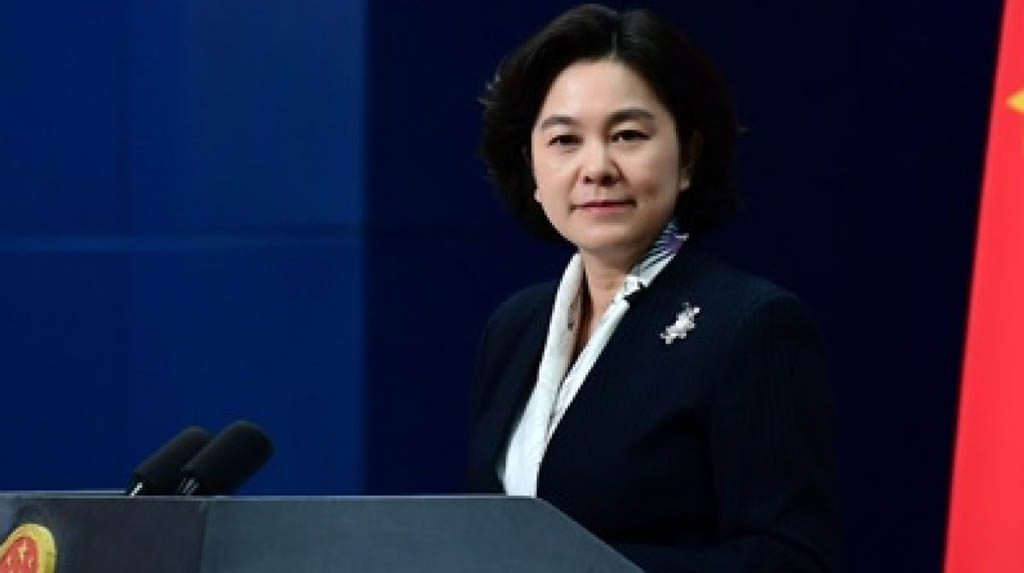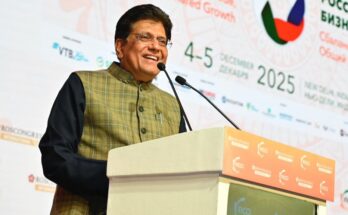Beijing/New Delhi: India and China have reached a consensus not to escalate the situation further , and maintain peace and stability along the border together, China’s Foreign Ministry spokesperson Hua Chunying said on Monday.
The spokesperson was referring to the current standoff between India and China and the Line of Actual Control (LAC) in Eastern Ladakh.
Chunying in Beijing said that on Saturday (June 6), China and India held commander-level talks over the border dispute in which the two sides reached a consensus to maintain peace and stability along the border together.
She said, “Recently, diplomatic and military channels of the two sides have maintained close communications on the situation along the border. One consensus is that the two sides need to implement the two leaders’ consensus and make sure that differences do not escalate into disputes.”
Prime Minister Narendra Modi and Chinese President Xi Jinping held two summits where they had decided to maintain peace and tranquility along the borders.
China’s Foreign Ministry spokesperson further stated that the overall situation is stable and controllable and the two sides are ready to engage in consultation to properly solve the relevant issues.
Chunying’s remarks came a day after the Indian Ministry of External Affairs in New Delhi stated that India and China have agreed to “peacefully resolve” the standoff situation in Ladakh in accordance with various bilateral agreements.
The ministry had stressed that military and diplomatic dialogue will continue to resolve the prevailing situation in Eastern Ladakh.
“The two sides will continue the military and diplomatic engagements to resolve the situation and to ensure peace and tranquility in the border areas,” the ministry had said in a statement.
The ministry issued a statement based on deliberations that happened during a meeting on Saturday between both the countries’ military delegates.
The ministry had stated that a meeting was held between the Corps Commander based in Leh and the Chinese Commander on Saturday in the Chushul-Moldo region. The Indian military delegate was headed by the commander of Leh based 14 Corp, Lieutenant General Harinder Singh, and Chinese delegate was headed by Major General Liu Lin, Commander of South Xinjiang Military Region.
The meeting took place in a cordial and positive atmosphere, the ministry had said.
“Both sides agreed to peacefully resolve the situation in the border areas in accordance with various bilateral agreements and keeping in view the agreement between the leaders that peace and tranquility in the India-China border regions is essential for the overall development of bilateral relations,” the ministry had said in a statement.
The ministry further stressed that both the countries noted that this year marked the 70th anniversary of the establishment of diplomatic relations between the two countries.
“Both the countries have agreed that an early resolution would contribute to the further development of the relationship,” the ministry had said.
India and China are having a dialogue to resolve the standoff situation in Ladakh region, particularly at the north bank of the Pangong Lake where the Chinese People’s Liberation Army has attempted to change the status quo.
China has made attempts to change the status quo by putting up shelters and setting up a camp in areas that were under Indian control so far.
Before this dialogue, talks between major general-rank officers between the two countries took place on June 2 that remained “inconclusive”.
A clash took place at Pangong Lake on May 5 when troops from both the armies were involved in clashes, leaving several from both sides wounded.
Sources further pointed out that the standoff was not a not a spontaneous reaction to India’s road construction in Ladakh. Unusual activities were first noticed a few weeks before the clash in May.
The current standoff in Ladakh is not the usual patrolling faceoff but part of the new combative strategy that was rolled out by China after the Doklam incident.
In 2017, there was a 73-day stand-off between Indian and China. The standoff was at the India-China-Bhutan tri-junction in Doklam. China’s road construction in the Bhutanese territory was seen as an attempt to change the status quo by India and finally the road work had to be stopped.




